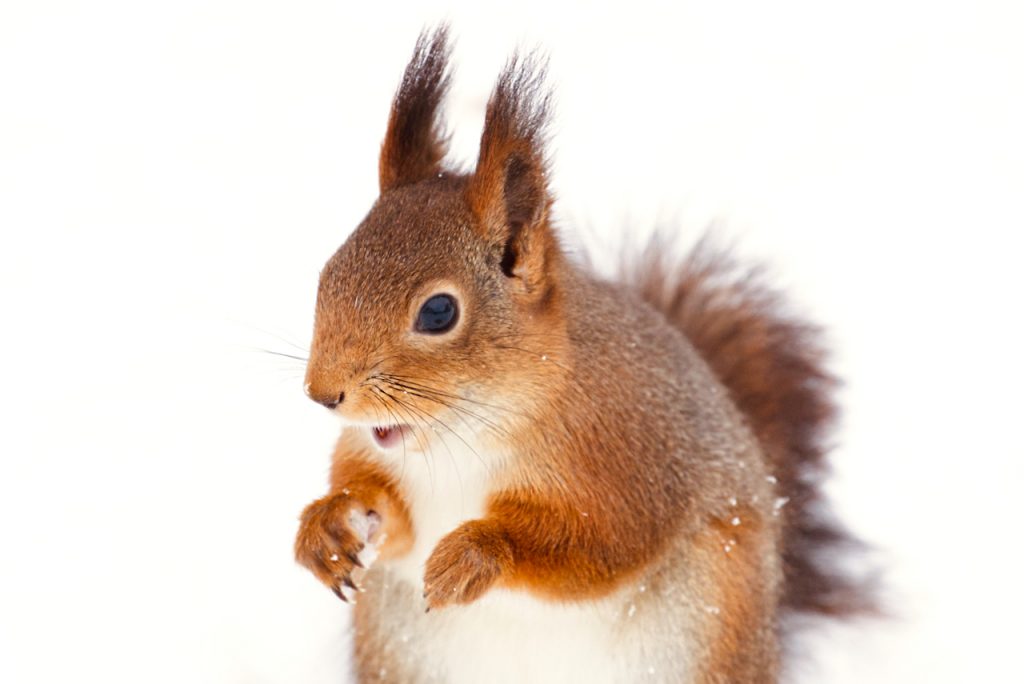

The usual squirrels haven’t visited for a couple of weeks now. I guess they’re all hiding in their dreys, munching on their nut provisions. It’s been very cold, and they must be as reluctant to go out in that frozen world as humans.
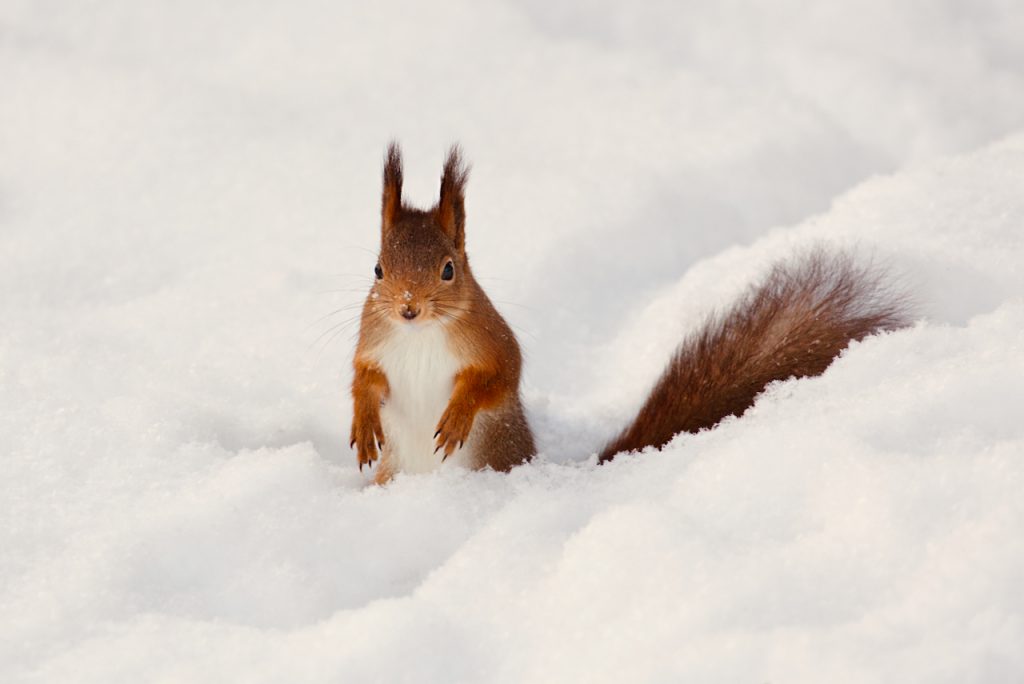
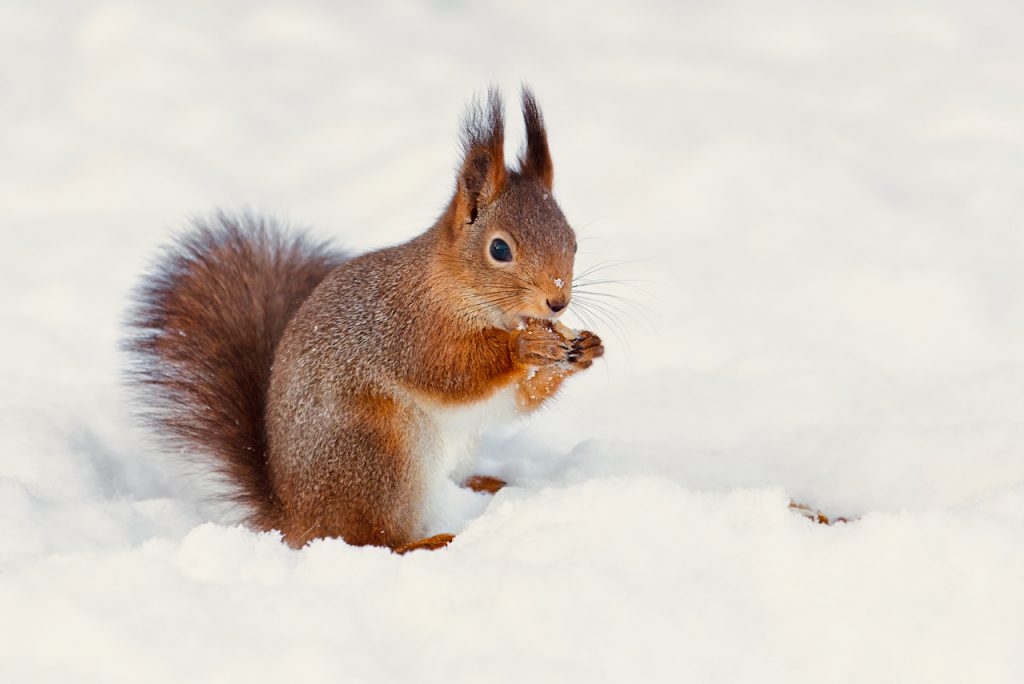
A new one came twice, much smaller and thinner than the others. She must have been desperate for food. The first time it was wary of me, darting away at my smallest move. The second time, still suspicious, she let me come much closer. I took a few pictures, but then I let her eat up the nuts and the sunflower seeds.
Her eyes were continuously scanning everything around her. She took only a fraction of a second break to pick up a new nut; the rest of the time was spent munching on the nut at turbo speed and checking the perimeter.
I saw a small squirrel once, chased by a large cat in our garden. The cat was very bold, indeed. I had to push her, physically, to get her away from the tree where the squirrel had climbed in panic. She came back as soon as I turned my back. You cannot be too careful.
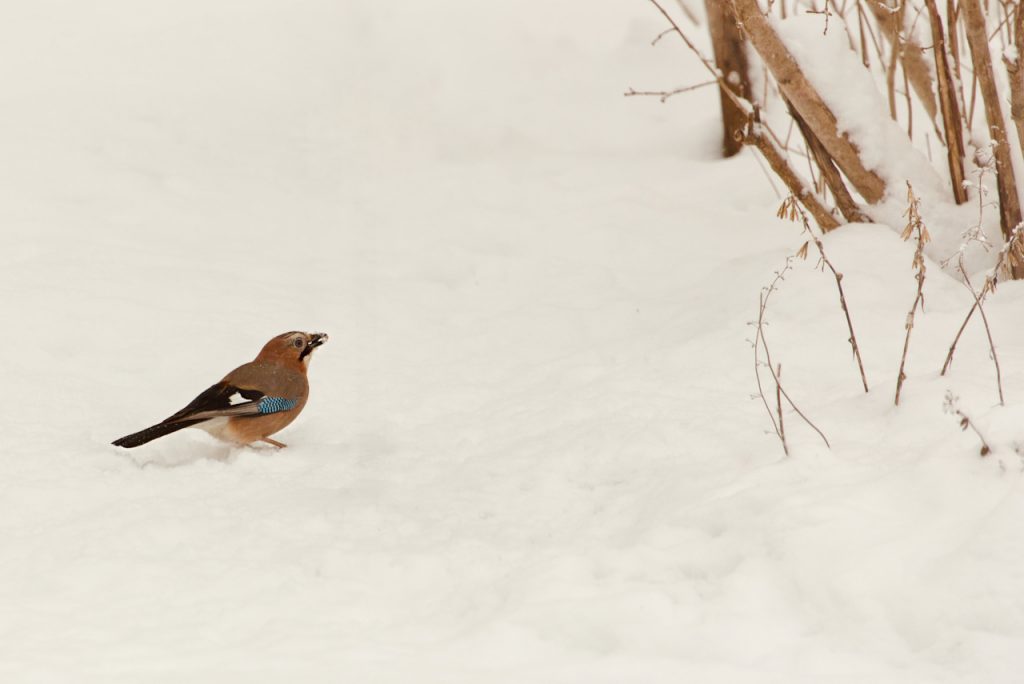
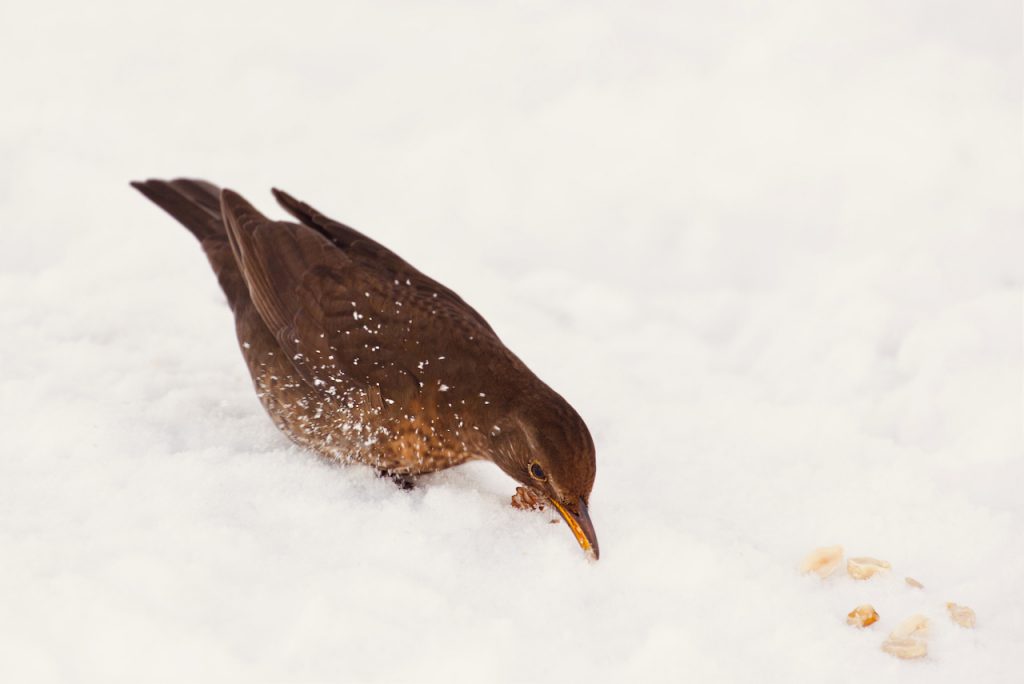
It’s the same with the birds. They have to if they want to survive. They fly into the trees at the hint of a movement. Flee first, check later.
This is the same fight or flight mechanism humans have as well. Our ancestors faced mostly physical dangers in their environment, like a lion. The hormones released by the response to the threat would ensure that the body was primed to deal with the threat, either fight the lion or run away as quickly as possible. A survival mechanism, simply put. The threat of lions is gone for modern humans, or most of them, in any case. The threats are now mental, but the body response is the same.
An important presentation at work, speaking in public, being late for a critical meeting, and so on. All the perks of modern life. The brain perceives them as threats and instructs the body to prepare for fight as it did millennia ago on the savannah: you start breathing faster, the heartbeat quickens, and your entire body becomes tense and ready for action. I’m sure you know exactly what I’m talking about.
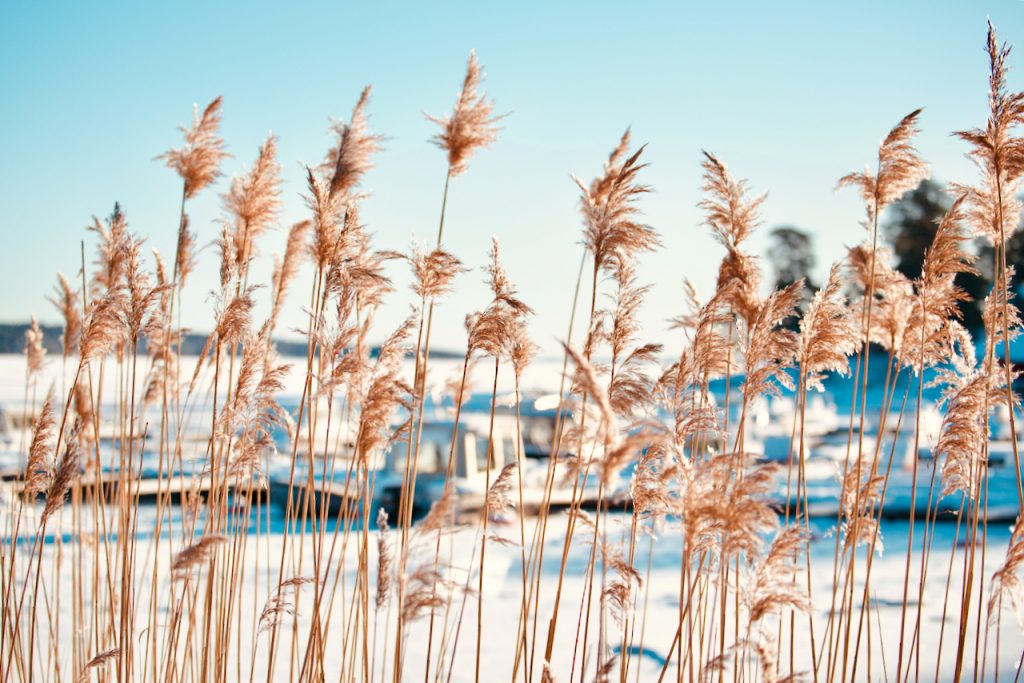
It’s not so surprising. We’re not so much different from our ancestors, after all. We just have more technology; monkeys with smartphones.
What’s more, the brain only needs the thought of a threat. I.e., it will respond to imaginary threats as well. Hence, the phobias.
Luckily, this works the other way around, too. This is why visualization and affirmations work.
The fight or flight response is a fine-tuned survival mechanism, but we have to learn to handle it when the mental stressors trigger it. If you’re in a car accident, it’s a great way for the body to increase your survival chances. If you’re in a meeting you dread, not so much.
For my part, I learned the hard way (including a trip to the ER with a panic attack that felt like an infarct) that breathing and calming my mind helped. But that’s another story to be told, maybe, in a future post.
For now, I’m happy watching the little squirrel and hoping she’ll make it through the winter.
Related Posts
If you liked this post, share it on your preferred social network or forward it to a friend.